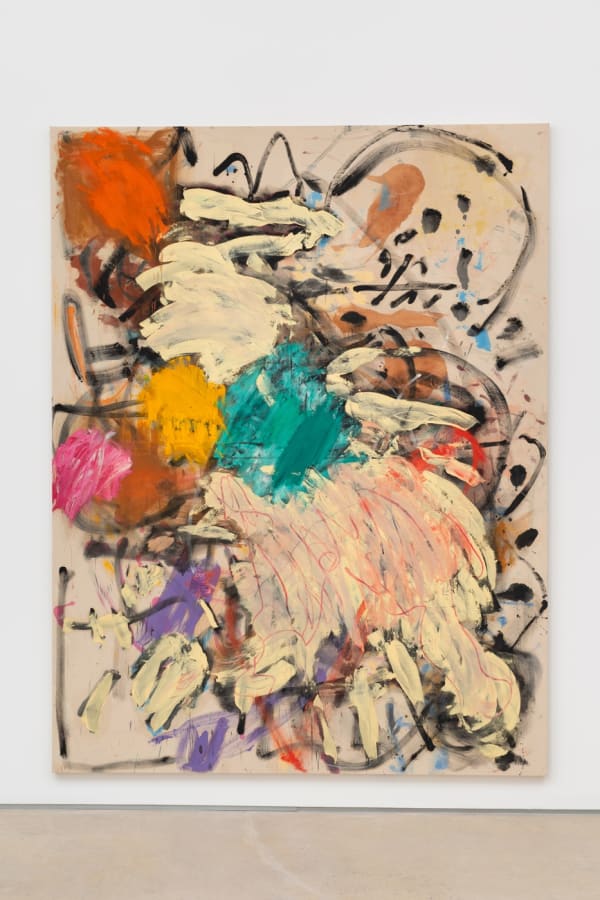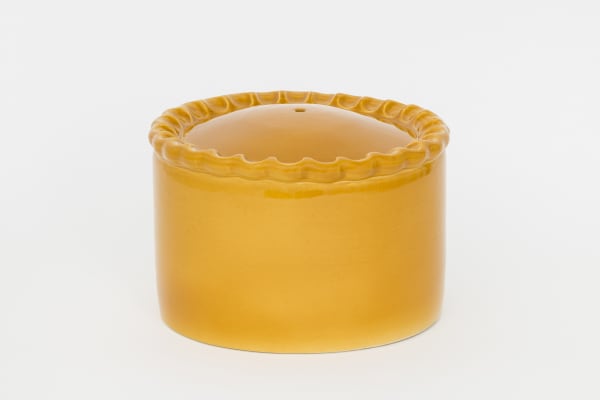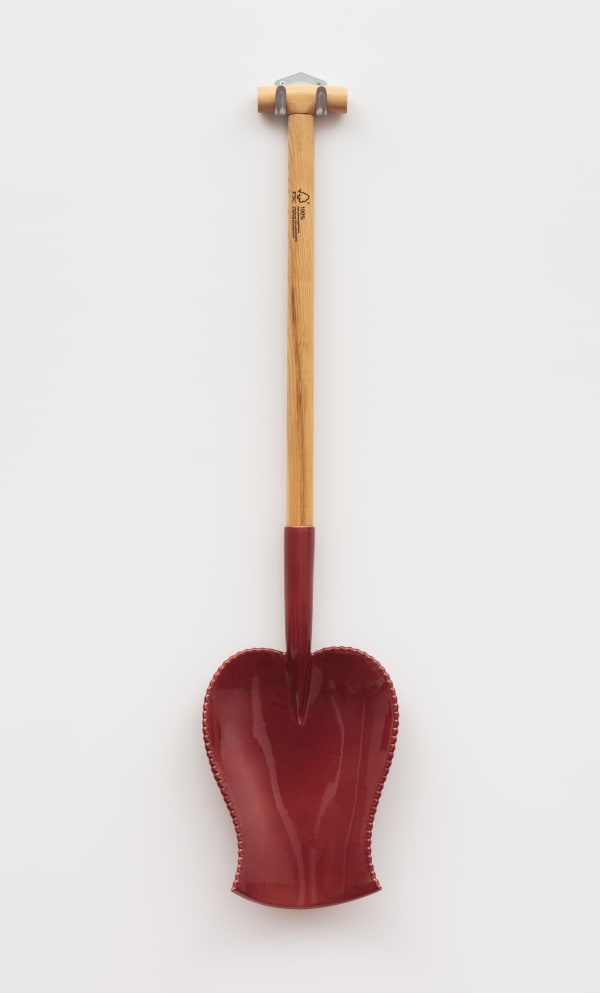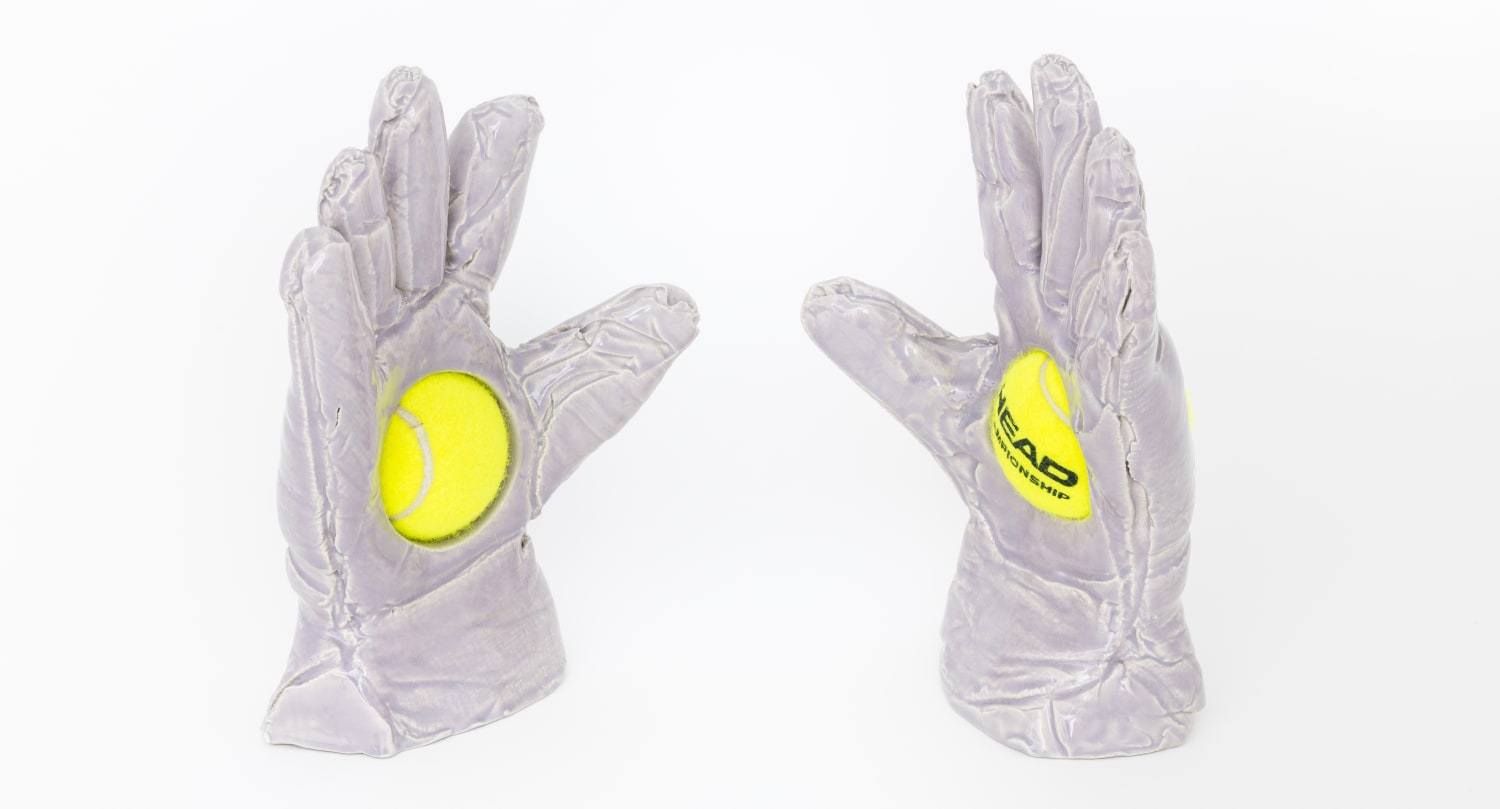Dallas Art Fair | Online Viewing Room: Basil Beattie, Andrea Geyer, Virginia Jaramillo, Hew Locke, Maja Ruznic, Richard Slee
Hales is pleased to showcase works by Basil Beattie, Andrea Geyer, Virginia Jaramillo, Hew Locke, Maja Ruznic and Richard Slee for Dallas Art Fair’s 2020 online viewing room. Diverse in perspective and their respective practices, their works explore histories, politics and aesthetics through powerful expressions of colour and material.
Basil Beattie RA (b. 1935 West Hartlepool, UK) has, over a practice spanning sixty years, formed a unique lexicon of pictorial imagery and gestural abstraction. Beattie has remained part of a milieu of post-war British artists whose works continue the legacy of Abstract Expressionism. The late 1970s and early 1980s were a key time of energetic expression for Beattie, before the introduction of symbolic motifs for which he has become synonymous. Occupying both mental and physical space, Beattie’s works from this critical period are about the dynamics of human experience – our emotions, memories and fleeting moments. Paintings from this period were exhibited at Goldsmiths gallery, London in 1982, the Hayward Annual (Hayward Gallery, London, 1980) and recently in his 2020 solo exhibition at Hales London, Cause & Effect. He has had significant solo exhibitions at prestigious institutions such as Royal Academy and Tate Britain, and has been included in group exhibitions at Barbican Centre, Camden Arts Centre, Gallery of Modern Art Glasgow, all UK.
Andrea Geyer (b. 1971, Freiburg, Germany) is engaged in an exploration into the complex politics of time in specific cultural contexts. This selection of work highlights her ongoing investigation into women-identified philanthropists, collectors, museum directors, artists, poets, political and social visionaries, and activists who have actively shaped today’s cultural landscape and contemporary museums. Geyer’s series of photographic collages, Constellations (2017-18), consist of reimagined portraits that depict influential women who significantly impacted the culture and politics of their time. The portraits are exemplary of Geyer’s practice, which continuously seeks to create spaces of critical, collective reflection on the construction of histories and ideas that are otherwise marginalised or obscured. Works from the Constellation series have been included in a number of exhibitions, including her solo show When We at Irish Museum of Modern Art, Dublin, Ireland(2018) and group exhibition The Rest of History, at the Virginia Museum of Contemporary Art (2019).
Virginia Jaramillo (b. 1939 El Paso, TX, USA) has forged a unique voice, exploring painting through extensive experimentation with material, process and form. The artist’s approach to abstraction has been informed by her early interest in archaeology, science fiction, and cultural mythologies. Foundations (1982) and Sites (2018) demonstrate her continued experimentation with material and process to pursue her ongoing explorations of human perception of reality. Foundations are meticulously formed from natural linen fibres and hand-ground earth pigments. Crossing the boundaries of drawing and painting, multiple veils of barely pigmented linen pulp is moulded to form geometric lines, creating a textural, organic finish. In Sites, Jaramillo focuses on the intricacies of the structures left behind by ancient cultures, the paintings are an in-depth study into the physical and spiritual life of ruins. Jaramillo has been included in recent blockbuster touring shows We Wanted A Revolution: Black Radical Women, 1965-85 and Tate’s Soul of a Nation: Art in the Age of Black Power, opening at The Museum of Fine Arts, Houston, TX in 2020. Later this year Jaramillo will have a solo exhibition at The Menil Collection, TX, USA.
Hew Locke (b. 1959 Edinburgh, UK) explores the languages of power, trade and how different cultures fashion their identities through visual symbols of authority, and how these representations are altered by the passage of time. These explorations have led Locke to a wide range of subject matters, imagery and media, assembling sources across time and space in his deeply layered artworks. The depiction of a colourful Queen Elizabeth II, is a reoccurring motif in Locke’s practice. Locke’s portrayal of monarchy often references medieval and renaissance imagery of the ruling elite, who were often portrayed with skulls or skeletons as a reminder that “in the midst of life we are in death” and that change is inevitable. Later this year, Locke’s expansive solo exhibition, The Man Who Would Be King opens at The Lowry, Salford, UK. Locke’s recent comprehensive solo show, Here’s the Thing organised by IKON gallery Birmingham, UK; has toured to Kemper Museum of Contemporary Art, MI and opens at Colby College Museum of Art, ME February 20, 2020.
Maja Ruznic (b. 1983 Bosnia & Hercegovina) is predominantly a painter, drawing on personal and collective memories to create works that deeply connect with human psyche.Ruznic deftly weaves themes of trauma and suffering with mythology and healing, softening the darker subject matter in her work. Playing with ambiguity, her paintings lie on the threshold of form, which Ruznic compares to a thought or a feeling that precedes language. Allowing for figures to emerge from the thin layers of oil paint she applies to the canvas, the characters seemingly coalesce with their environments. My Noiseless Entourage (2019) refers to a passage by Yugoslavian-American poet, Charles Simic. Ruznic’s figures are depicted on a journey, on the brink of identity and memory, painting a collective and symbolic trauma. Ruznic’s works were recently featured in The Moon Seemed Lost, at Hales New York and will be the subject of a debut solo exhibition at Hales London later this year. In 2019, Dallas Museum of Art, TX and the US Embassy in Sarajevo, Bosnia & Hercegovina acquired her work for their collections.
Richard Slee (b. 1946 Cumbria, UK) is deemed to be one of Britain’s most significant and influential ceramic artists. His works lie in contemporary debate and reference the current positioning of material specialisations within visual creativity. Merging humour and irony with profound technical ability, Slee challenges the conventions of the studio pottery tradition, transcending its utilitarian roots and paving the way for a new genre of ceramic art. Slee repositions and reframes everyday objects in glazed ceramic, with the artist suggesting that he makes a tool useless by making it precious. In Racquet (2010) Slee refers to a recognisable object, which becomes abstracted through shape and form – ceramic, metal and green plastic netting that was cut from a material commonly placed in sinks in the 1960s. Perfect Pie (2003) was inspired by factory made pies that appear to be handcrafted – in this work Slee uses his thumbprint to reference medieval pottery technique. These works were recently exhibited in Slee’s solo exhibition at Hales New York. His solo show, Richard Slee, Mantlepiece Observations will open later this year at Bolton Museum, UK.























